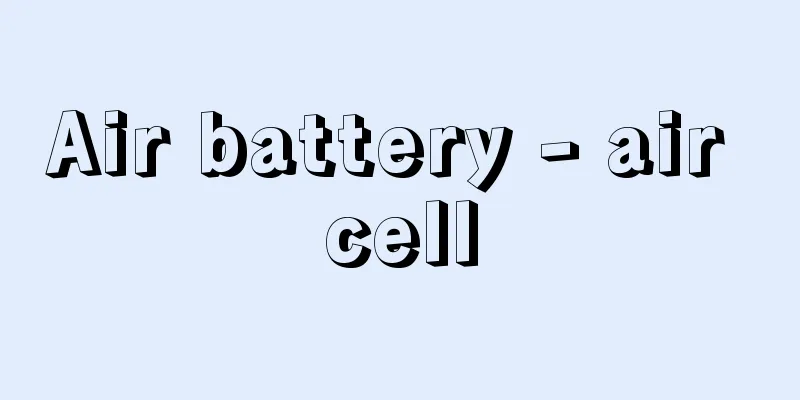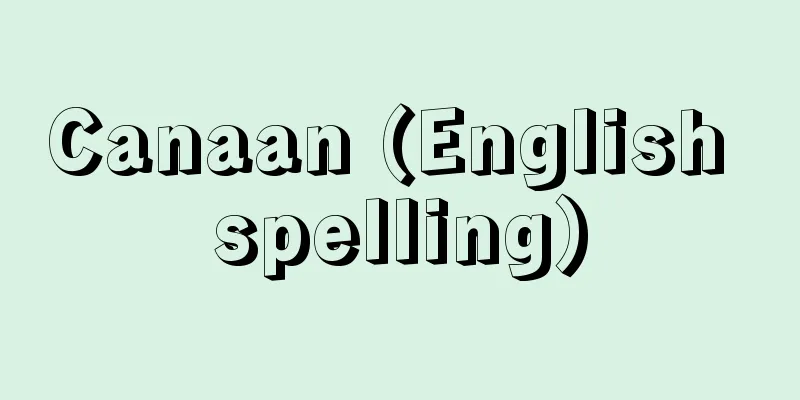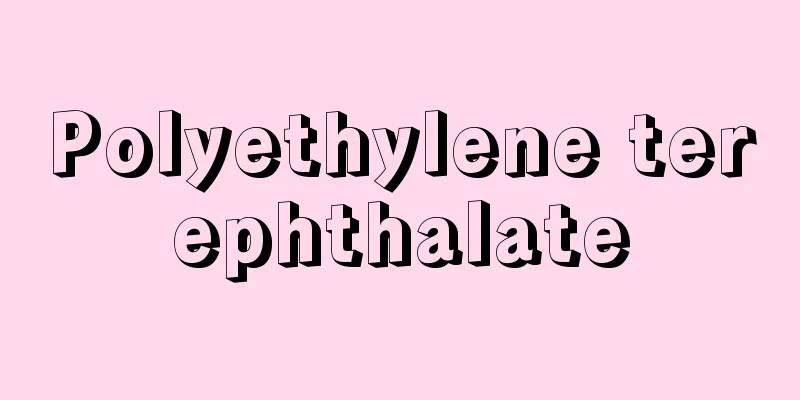Air battery - air cell

|
A type of alkaline primary battery that uses oxygen from the air as the positive electrode active material. Button-type zinc-air primary batteries are produced that use zinc as the negative electrode active material and a 30% aqueous solution of potassium hydroxide gelled with a binder as the electrolyte. They were invented in 1917 by Charles Féry (1865-1935) of France. Air batteries use a thin porous gas diffusion electrode developed for fuel cells as the air cathode, and are composed of an electrolyte, a catalyst, a separator, and zinc particles as the anode active material. Since there is no need to retain the cathode active material inside the battery, the amount of zinc in the anode active material can be increased accordingly, resulting in a higher capacity. The cathode reaction is O 2 + 2H 2 O + 4e - - → 4OH - If an alkaline aqueous solution is used as the electrolyte, it will deteriorate due to carbon dioxide in the air, so zinc-air batteries using a weakly acidic zinc chloride aqueous solution have also been developed. The total cell reaction in this case is 4Zn + 2O 2 + ZnCl 2 + 4H 2 O In addition, zinc-air batteries have also been produced as a type of metal-air battery. However, when charging, the unnecessary air electrode is also charged and deteriorates, so only the zinc negative electrode is charged in a separate electrolytic layer, and mechanical charging is performed by replacing the negative electrode. [Mitsuru Asano] "Electrochemistry" edited by Zenpachi Ogumi (2000, Ohmsha)" ▽ "Electrochemical Society, ed., "Electrochemistry Handbook" (2000, Maruzen)" ▽ "Battery Handbook" edited by the Battery Handbook Editorial Committee (2001, Maruzen)" [References] | | |©Shogakukan "> Structure of zinc-air battery (button type) Source: Shogakukan Encyclopedia Nipponica About Encyclopedia Nipponica Information | Legend |
|
正極活物質に空気中の酸素を用いるアルカリ一次電池の一種。負極活物質に亜鉛、電解液には水酸化カリウムの30%水溶液を結着剤でゲル化したものを用いたボタン形の空気亜鉛一次電池が生産されている。1917年フランスのフェリーCharles Féry(1865―1935)が考案した。 空気電池は空気正極として燃料電池用に開発された多孔質の薄いガス拡散電極を用い、電解液、触媒、セパレーターおよび負極活物質の亜鉛粒子などから構成されている。正極活物質を電池内に保持する必要がないので、その分負極活物質の亜鉛量を増すことができ、高容量化を図ることができる。正極反応は 電解液にアルカリ水溶液を用いると空気中の炭酸ガスによる劣化があるため、弱酸性の塩化亜鉛水溶液を用いた空気亜鉛電池も開発されている。この場合の全電池反応は また、金属空気電池の一つとして亜鉛空気蓄電池もつくられているが、充電するとき必要のない空気極までも充電され劣化してしまうので、亜鉛負極の充電のみを別の電解層で行い、負極を取り替える機械的充電などが行われている。 [浅野 満] 『小久見善八編著『電気化学』(2000・オーム社)』▽『電気化学会編『電気化学便覧』(2000・丸善)』▽『電池便覧編集委員会編『電池便覧』(2001・丸善)』 [参照項目] | | |©Shogakukan"> 空気亜鉛電池の構造(ボタン形) 出典 小学館 日本大百科全書(ニッポニカ)日本大百科全書(ニッポニカ)について 情報 | 凡例 |
>>: Air conditioning - air conditioning
Recommend
World Assembly of Youth
...The purpose of this was to encourage youth fro...
Management society
It refers to a society that inherently contains m...
Energy efficiency
Formerly known as caloric efficiency, it is an ind...
slowing down power
…However, since the atoms of the moderator must b...
Burges, W.
…His name is originally pronounced Con-der. In hi...
Aoyama Tadakado
1518-? A samurai from the Sengoku-Oda-Toyotomi pe...
Xenopus laevis
… [Takahiro Matsui]. … *Some of the terminology t...
Unison - yunison (English spelling) unison English
A method of forming textures (sound composition p...
Shooting stick
…The distinctive design feature is the shape of t...
Isthmia Festival - Isthmia Festival
…Abbreviation for the Olympic Games. In Japan, it...
Prince and Princess
The title of a member of the imperial family who b...
IBF (Aircraft)
...However, for medium to large aircraft, if the ...
Fanny Lewald-Stahr
1811‐89 A German female writer who advocated women...
Gnaphalium multiceps - Gnaphalium multiceps
A biennial herb of the Asteraceae family, also cal...
Yatsuhashi-ryu
The name of a school of koto music. (1) It is used...









